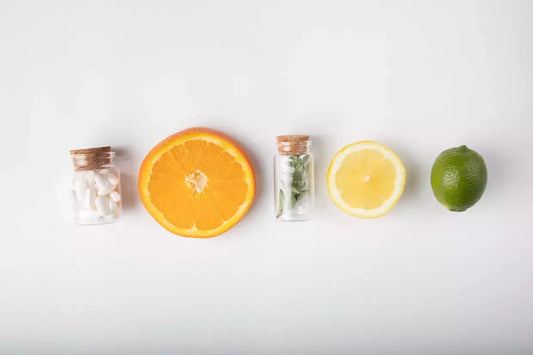At some point in our lives, we’ve all tried to get rid of a habit, usually, because the habit is unwanted or something we know isn’t good for us (think biting your nails). And habits, even the good ones, can turn into obsessions. As humans, we tend not to notice the pattern of all subconscious activities that we do on a daily basis. There are tons of repeated actions in our routines that could negatively affect our lives.
So, is a habit good or bad? It’s not that easy to tell, because there is a lot happening beneath the surface. Let’s uncover all there is to know and answer the million-dollar question: ”How can I break a habit?

How Are Habits Formed? The Three-Step Habit Loop
Whether it’s quitting or beginning—habit-forming or breaking can give us a tough time. For the same reason you might get frustrated at your friend for not breaking their bad habit, you might also go through the same frustration when trying to start a habit of your own like those 6AM workouts.
Habits and their formation have been a topic of fascination for both philosophers and scientists for a very long time now. Since habitual behaviors actually affect our health and happiness, it’s out of genuine concern that psychologists continuously put their energies to figure out human psyches better.
We all know what’s good for us and what’s bad for us. But that’s the thing with our brain constructing habits: conscious knowledge isn’t enough to change old habits. There’s a whole process our brains go through in establishing habits, which is why it’s extremely hard to get rid of even the most minor habitual behaviors once we’ve gotten used to them.
There are three staged components involved in making a habit: cue, routine, and reward—this is often referred to as the “habit loop.” The “cue” triggers your brain to let the behavior unfold, basically pushing you to do something in the pursuit of a result. The “routine” is the behavior itself, and the “reward” is whatever result you get out of following that habit—whether it’s just to satisfy your taste buds or that minty freshness after brushing your teeth.

To help solidify a habit in your brain, repetitively undergo a certain action over and over again until your brain starts taking it as an automated part of you. Let’s put it this way: once your brain starts taking certain actions as automatic responses to different situations, it’s not really putting in as much energy to do that task, putting it on autopilot mode. Your brain then has the additional mental capacity to focus on other tasks or things that requires more of your attention. If you had to remember the route to your best friend’s house every time you decided to drop by for a visit, you would never look forward to it! It would become so exhausting for your brain that you might skip your plans.
How do I Break Up with My Bad Habits?
For starters, try not to rush into it.
Think about it another way: your habit, a series of actions repeated over time, takes a while to get encoded so your brain can operate on autopilot. Reversing it, going against that code, might take just as long.
One starting place is to look at reward-based learning. Look at your rewards in the habit loop—are they rewarding you? Starting here and working backward might help you breakdown why you are doing a habit and help your approach changing them without feeling defeated when you can’t kick that frustrating habit. Patience is always key! Remember to be kind to yourself while breaking down your rewards and behaviors.
What are some other ways to help with habit breaking? We’ve listed some below to help you get started:
- Find New Ways to Destress Yourself – as humans, when we’re stressed, we tend to do things that we wouldn’t do otherwise. Find new ways to focus on you and ground yourself through morning walks, meditations, or even a minute of deep breathing.
- Keep an Eye Out for Your Triggers – Look out, recognize, and acknowledge what triggers the habit you’re trying to break. Is it stress? Is it a certain day of the week? Too many work meetings? While we might give into our cravings or old habits, the first step is always acknowledging what gets us there.
- Replacing the Bad Habits with Good Ones – Flip the script and look for a creative solution or new habit you can replace your bad or unwanted ones with, especially if it can create the same feeling in your brain (read more about good habits here).
- Examine the Reward – Look at the end result and think through the feeling you get with your unwanted habit. If replacing it with something else, list out all the positive rewards of the new habit. You may find that the rewards of the new habit outweigh the fleeting dopamine “high” of the habit you’re trying to break.
- Stay Steady and Patient – Be kind to yourself! This kind of work takes time, and it’s always good to make sure to follow new habits slowly and regularly, building it into a ritual that leaves you fulfilled and satisfied.
The Takeaways
Here’s the deal: since habits never disappear, they need to be replaced with similar positive attitudes and actions, that will eventually have a better outcome on your health, and life in general.

We’re no strangers to routine here at Hydrant. Regular hydration habits can help you stay properly hydrated throughout the day and lead to a host of benefits like clearer skin, more energy, improved focus, and stronger workout performances. If you’re trying to bring Hydrant into your daily routine but are struggling with some habit tips and tricks, the key is to ritualize your Hydrant consumption—make it something that you look forward to every day. Some of our team members have a special glass they leave out next to their Hydrant on the kitchen counter so it’s the first thing they see after getting up in the morning. Another approach we’ve heard from our customers is leaving their Hydrant right next to their coffee maker at home so that when they are waiting for the coffee to brew, they remember to immediately get their hydration kick-started as well.
To stay faithful to your new routine, keep an eye out for your triggers that might lead you to reinforce old habits that you’re hoping to move away from. Ultimately, have patience with yourself as habit-forming and breaking takes time; change doesn’t happen overnight!















